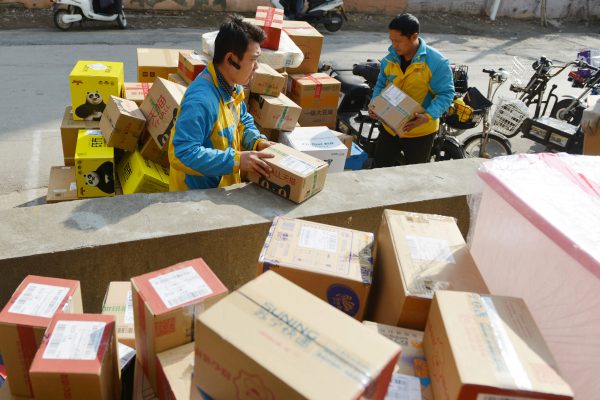Although this reconsideration predates the pandemic, extended global supply chains will make far less sense in the post-COVID-19 world. The highly touted economic efficiencies generated by extreme specialisation of production and just-in-time inventories will now be weighed against the vulnerabilities they embed across global supply chains if even just one link in the chain breaks down. Rising economic nationalism and strategic rivalries further exacerbate these vulnerabilities.
In the balance between economic efficiency and security of supply, the pendulum is swinging back towards security. This shift will apply not only to essential medical supplies but across the full spectrum of trade. Recall how many automotive production facilities, in South Korea, Japan and elsewhere, suspended operations at the onset of the coronavirus outbreak when the flow of critical components from China was interrupted.
Automotive production is not a matter of life and death, but the lesson — that over-reliance on a single market is unsustainable — remains the same. Global trends indicate that this lesson is being readily absorbed.
Businesses and governments are now actively seeking a greater hedge against dependency risk in trade. Policies encouraging more domestic production — and to keep more of what is produced at home — are being implemented across both developed and developing economies. Vietnam has banned rice exports. India has restricted exports of an antimalarial drug that might be useful in combatting COVID-19.
The United States, although later modifying its stance, interrupted shipments of facemasks produced by the US company 3M that were bound for other countries. At least 54 countries have instituted some form of export restriction on medical supplies since the beginning of the year, according to Global Trade Alert.
Technology is also playing a critical role. The need to produce medical supplies has pushed companies such as Boeing, Ford and General Electric to embrace additive printing — a trend that will only facilitate the onshoring of supply chains.
At the recent G20 Finance Ministers meeting in Riyadh, French Finance Minister Bruno Le Maire — a staunch advocate of deepening economic integration — posed a question which just a few years ago would have seemed inconceivable:
‘Do we want to still depend at the level of 90 per cent or 95 per cent on the supply chain of China for the automobile industry, for the drug industry, for the aeronautical industry or do we draw the consequences of that situation to build new factories, new productions, and to be more independent and sovereign? That’s not protectionism — that’s just the necessity of being sovereign and independent from an industrial point of view’.
Le Maire’s comment captures the policy debate officials around the world are wrestling with, even in countries that have traditionally been strong pro-trade and pro-integration advocates.
As policy debates and boardroom deliberations continue to unfold, the likely upshot will be shorter supply chains, more emphasis on regional trade and less reliance on a single trade partner. This could have big implications for the Comprehensive and Progressive Agreement for Trans-Pacific Partnership (CPTPP). The CPTPP provides a logical platform for responding to some of the risks arising from COVID-19.
China and the United States are the predominant trade and investment partners for CPTPP members. Given the economic importance of both countries and the challenges inherent in relocating supply chains, this trend won’t dramatically change overnight. But since neither China nor the United States are currently parties to the CPTPP, the agreement is a useful vehicle to achieve greater trade and investment diversification. It, and the pending RCEP agreement, allows East Asian members to fortify relationships closer to home, rather than across the Pacific.
As a self-selected, voluntary grouping of economies ostensibly committed to promoting trade and investment among members, the CPTPP could provide some degree of insulation against the surge of export restrictions.
With the CPTPP positioned to take on greater relevance in the post-COVID-19 world, membership will expand. Although some domestic opposition has arisen, Thailand is predicted to be first up, but several other countries including South Korea, Indonesia and the Philippines have also indicated interest.
Japan seems to be the informal new member recruitment manager, with Japanese officials already working closely with their Thai counterparts on the mechanics of accession. Japan’s role is not a matter of happenstance. Japanese officials now understand the dangers of overreliance on a single market. Japan relies on China for about 37 per cent of its imports of automotive parts and 21 per cent of its imports of intermediary goods overall.
In light of the COVID-19 disruptions, Japan is making a concerted effort to reduce its supply chain dependencies on China. The recent stimulus bill passed by the Japanese legislature allocated US$2.2 billion to help Japanese manufacturers shift production out of China. This desire for greater diversification has dovetailed with Japan’s strong commitment to the CPTPP and is leading to an even more proactive push for new members.
The COVID-19 pandemic will recede at some point. But its impact on trade will endure. The world can expect to see less China-reliant supply chains and a beefed-up CPTPP, providing a potential boost for ASEAN’s strong regional orientation.
Stephen Olson, based in Hong Kong, is a Research Fellow at the Hinrich Foundation Ltd.
This article is part of an EAF special feature series on the novel coronavirus crisis and its impact.

